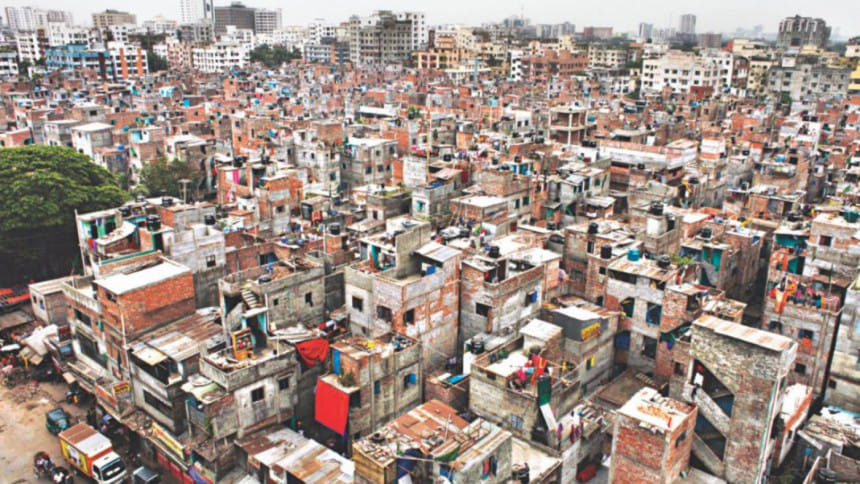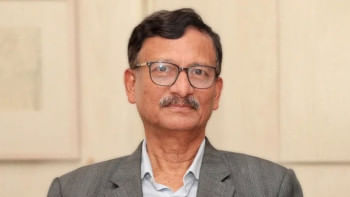Growth, green growth and development

The dictionary meaning of "growth" is "getting bigger", in size or volume, whereas "development" is improvement in the quality of a system. It can be an individual, a community, or a nation. Growth is termed as a physical change, whereas development is said to be physical as well as socioeconomic or psychological change. Thus, "development" may require growth (physical), or may happen without, depending on the context. For example, growth in basic needs for people add to improvement in quality of life, but growth in mere junk productions does not add to any development. Growth in a developing economy may add to quality of life, but not much in a rich developed economy. So, there is a de-growth movement to maintain environmental sustainability.
Also the terms "green growth" or "sustainable growth" are used often by policymakers, which actually is an oxymoron: a contradiction in terms. Growth in a finite system, like in a limited, bounded space as in a country or in global ecological system, cannot continue ad infinitum. However, green growth sounds better in terms of maintaining a balance with nature. In this sense sustainable development appears to be the right concept, as an ideal, though difficult to operationalise. Looking through these conceptualisations, can we really say that the rapid growth in Dhaka city leads to improvement in quality of life of its citizens? In yearly global Liveability Index Dhaka fares lowest/almost lowest year after year. Based on regular but varied national reflections on Dhaka in this daily, I have to argue this dishevelled, callous growth in Dhaka city is not development by any means. Let me justify my thesis based on a few basic indicators.
First about the open space: The WHO says a minimum of 9 sqm of open space/person is needed as a basic amenity. In many Western cities, there is more than 20 sqm of open space/person. On October 29 this daily carried a beautiful piece on open space. But how much of it is there in Dhaka city? Numbers may vary, but here are a few: about 0.052 sqm/person (DAP, 2009), which is several orders of magnitude lower than the minimum standard. An ideal city is regarded where there is about 20 percent forest cover, but we have about seven percent under vegetation of sorts, about one percent as public parks. Actually, any open space is viewed as kind of an "eye sore" by our builders, so something has to be built. The result is the concrete slum that we have. Our cars drown with just an hour of torrential rain in parts of Dhaka.
In my class, I joke with students that movies of the 1960s showed Romeo and Juliet as sharp shooters in the neighbouring rooftops exchanging epistles wrapped over little stones. Now they can shake hands from back windows. It's better now that the government has a guideline about a third of residential plots to be left un-built.
Next, about roads and footpaths. Again in a civic city, planners say about 20 percent of space should be left for roads including footpaths and thoroughfares. How much do we have in Dhaka? Barely six percent, with very little footpaths in a city where 60 percent of people walk. Whatever narrow tiny footpaths we have, they are under the control of either policemen or of student leaders, and poor vendors eke out their livelihood at their behest.
Third, about air quality or noise pollution. The Department of Environment often measures these indicators, which show a really alarming picture. Air quality in the densest parts of the city is over 100 times worse than the WHO's prescribed standard. The result is that millions have asthma, whereas when we were young we barely saw anyone suffering from asthma in Dhaka. It is the same when it comes to noise pollution. The high dB level is deafening for children, young and old alike, though the High Court banned hydraulic horns. In our no land zoning culture, educational institutions or hospitals are no different than shopping plazas or industrial units.
What about the ponds, canals and rivers in and around Dhaka city? This newspaper carried quite a number of reports on disappearing ponds and canals within core areas of Dhaka. But thanks to developers and powerful encroachers, almost all are gone. Again, Dhaka is bounded by four rivers and historically, cities have been established along river banks, for easy communications, amenities and trading. What a mess we have made of ours! We now depend overwhelmingly on ground water, which is fast depleting because of overexploitation. In all these four rivers, you cannot find a single drop of clean water, not to talk of its chemical parameters. Because of extinction of ponds particularly in old Dhaka, some citizens still take baths in the stinky pitch-black waters of the Buriganga, once the lifeline of Dhaka city.
Next about housing. Real estate value in Dhaka city is one of the highest in the world, comparable to Tokyo, London or New York. What pride we have, with income barely reaching USD 1,600 per capita. About 40 percent of the city's population live in slums which lack basic amenities. In the recent crusade against drug peddlers, police have caught most of the criminals from the city's slums. The government does not yet have a firm housing policy for those who build for us. Vested interests are keen on catering to the needs of only the rich, not the poor.
Finally, we are being told to follow the Pudong model, leaving behind this mess of Dhaka West, to move East, as a frontier land left open—but actually it's a sprawling floodplain! Huge investments, both national and international, with profuse advice wait in the wings. Can we do it without restraining our greedy developers, or without making the RAJUK accountable? Or, without questioning our culture of impunity of powerful interests? What about the citizens of Dhaka West? Should they be left in a perpetual moribund state?
These are a few reflections of mine on a few aspects that touch our lives at the core, but our policymakers tend to worship any kind of growth, without reflecting on its development features. So, instead of marching to the East too fast, first we should think of how we can decentralise our Dhaka-centric country and bring in basic amenities with a little order to Dhaka city and its satellites. This will provide vital lessons for building the East. Perhaps we should let investments be put on hold for a moment and have a collective reflection for both fronts.
Mizan R Khan is professor, Environmental Management, North South University and currently, visiting professor, School of Public Policy, UMCP, USA.

 For all latest news, follow The Daily Star's Google News channel.
For all latest news, follow The Daily Star's Google News channel. 



Comments